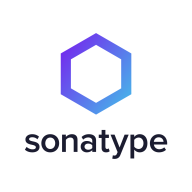

GitHub and Sonatype Lifecycle are significant players in the software development and security market, primarily competing in open-source project management and DevOps security. Sonatype Lifecycle holds an edge in security capabilities, while GitHub excels in collaboration and integrations.
Features: GitHub is recognized for its collaboration capabilities, code management, and extensive integrations. Its versatility supports open-source projects and development teams. Sonatype Lifecycle stands out for its proactive security measures, seamless integration with DevOps tools, and detailed vulnerability reports.
Room for Improvement: GitHub could improve by enhancing project management features, streamlining its user interface for non-technical users, and strengthening security functions. Sonatype Lifecycle would benefit from increasing its supported languages, refining its user interface, and improving the granularity of its Jira integration.
Ease of Deployment and Customer Service: GitHub is easy to deploy in the public cloud and offers robust community support. Sonatype Lifecycle's deployment is mostly on-premises, with users appreciating sales interactions, though customer service responsiveness requires enhancement.
Pricing and ROI: GitHub provides a cost-effective solution, offering many free features suitable for budget-conscious users. While its pricing model can be tricky for user management, it offers free options for public projects. Sonatype Lifecycle is more expensive but offers extensive security features that justify its cost, delivering good ROI by preventing expensive security breaches.
We have seen cost savings and efficiency improvements as we now know what happens in what was previously a black box.
Some forums help you get answers faster since you just type in your concern and see resolutions from other engineers.
The technical support from GitHub is generally good, and they communicate effectively.
I have not used GitHub's technical support extensively because there are many resources and a robust knowledge base available due to the large user community.
They are helpful when we raise any tickets.
We have never had a problem with scalability, so I would rate it at least eight to nine.
GitHub is more scalable than on-prem solutions, allowing for cloud-based scaling which is beneficial for processing large workloads efficiently.
JFrog is easier to configure for high availability as it does not require extra components.
It provides a reliable environment for code management.
If a skilled developer uses it, it is ten out of ten for stability.
GitHub is mostly stable, but there can be occasional hiccups.
Sonatype Lifecycle is very stable, especially in the binary repository management use case for managing binary artifacts.
I would like to see some AI functionality included in GitHub, similar to the features seen in GitLab, to enhance productivity.
Sometimes we do not get the exact solution, and the suggested solution does not work, so GitHub could improve in that area.
There are still areas for improvement with GitHub Actions and their deployment workflows, as they have made significant progress but are not yet polished.
We also noticed a lack of detailed information for configuring Sonatype Lifecycle for high availability and data recovery.
The pricing of GitHub depends on the choice of solutions, such as building one's own GitHub Runners to save money or using GitHub's Runners with extra costs.
The pricing of GitHub is reasonable, with the cost being around seven dollars per user per month for private repositories.
Normally, GitHub is not expensive, but it would be welcome if it reduces costs for developing countries.
For larger numbers like our case with 1,000 user licenses, JFrog becomes much more cost-effective, roughly ten times cheaper than Sonatype.
I like how I can create different builds from different branches, which helps me as a QA to test certain features separately from the main application.
GitHub Actions allow for creating multiple jobs that run in different stages such as build, test, and deploy, which enable better visibility and control over the deployment pipeline.
The pull request facility for code review.
The integration into our CICD pipeline enables us to continuously monitor code changes and identify new vulnerabilities.
The most valuable feature for us is Sonatype Lifecycle's capability in identifying vulnerabilities.


Sonatype Lifecycle is an open-source security and dependency management software that uses only one tool to automatically find open-source vulnerabilities at every stage of the System Development Life Cycle (SDLC). Users can now minimize security vulnerabilities, permitting organizations to enhance development workflow. Sonatype Lifecycle gives the user complete control over their software supply chain, allowing them to regain wasted time fighting risks in the SDLC. In addition, this software unifies the ability to define rules, actions, and policies that work best for your organizations and teams.
Sonatype Lifecycle allows users to help their teams discover threats before an attack has the chance to take place by examining a database of known vulnerabilities. With continuous monitoring at every stage of the development life cycle, Sonatype Lifecycle enables teams to build secure software. The solution allows users to utilize a complete automated solution within their existing workflows. Once a potential threat is identified, the solution’s policies will automatically rectify it.
Benefits of Open-source Security Monitoring
As cybersecurity attacks are on the rise, organizations are at constant risk for data breaches. Managing your software supply chain gets trickier as your organization grows, leaving many vulnerabilities exposed. With easily accessible source code that can be modified and shared freely, open-source monitoring gives users complete transparency. A community of professionals can inspect open-source code to ensure fewer bugs, and any open-source dependency vulnerability will be detected and fixed rapidly. Users can use open-source security monitoring to avoid attacks through automatic detection of potential threats and rectification immediately and automatically.
Reviews from Real Users
Sonatype Lifecycle software receives high praise from users for many reasons. Among them are the abilities to identify and rectify vulnerabilities at every stage of the SDLC, help with open-source governance, and minimize risk.
Michael E., senior enterprise architect at MIB Group, says "Some of the more profound features include the REST APIs. We tend to make use of those a lot. They also have a plugin for our CI/CD.”
R.S., senior architect at a insurance company, notes “Specifically features that have been good include:
• the email notifications
• the API, which has been good to work with for reporting, because we have some downstream reporting requirements
• that it's been really user-friendly to work with.”
"Its engine itself is most valuable in terms of the way it calculates and decides whether a security vulnerability exists or not. That's the most important thing. Its security is also pretty good, and its listing about the severities is also good," says Subham S., engineering tools and platform manager at BT - British Telecom.
We monitor all Application Security Tools reviews to prevent fraudulent reviews and keep review quality high. We do not post reviews by company employees or direct competitors. We validate each review for authenticity via cross-reference with LinkedIn, and personal follow-up with the reviewer when necessary.